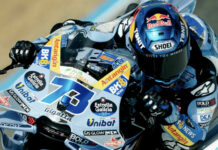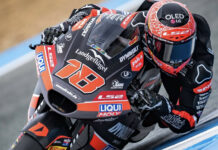The Specialty Vehicle Institute of America and Motorcycle Industry Council Statement Regarding Lead Ban and Lead-Containing Parts of Youth ATVs and Motorcycles IRVINE, Calif., September 11, 2009 The Specialty Vehicle Institute of America (SVIA) and the Motorcycle Industry Council (MIC) issued the following statement regarding U.S. Consumer Product Safety Commission (CPSC) Chairman Inez Tenenbaum’s September 10, 2009 testimony before the House of Representative’s Subcommittee on Commerce, Trade and Consumer Protection. “As Chairman Tenenbaum stated in her testimony, SVIA and member company representatives met recently with the Chairman to discuss industry’s ATV safety programs as well as the unintended consequences of the Consumer Product Safety Improvement Act (CPSIA) that has effectively banned the sale of youth model ATVs, motorcycles and snowmobiles. We greatly appreciated the opportunity to meet with Chairman Tenenbaum and look forward to an ongoing dialogue with her on these important issues. As CPSC Commissioners and staff have acknowledged, this ban will likely result in children under 12 years of age riding larger and faster adult-size vehicles, creating in the agency’s own words a “more serious and immediate risk of injury or death” than any risk from lead exposure. SVIA and MIC would like to clarify the industry’s position on lead-containing parts on youth off-highway vehicles. ATV and motorcycle manufacturers could cover or make compliant parts on these vehicles that a child operator routinely interacts with such as brake and clutch levers, throttle controls and hand grips. However, the issue has always been about the component parts not touched while in the riding position, such as engine housings, carburetors, fasteners, frames and structural components that exceed the lead limit. These parts contain lead for structural, durability and other safety critical reasons. Under CPSC’s final rule on “accessibility” published in the Federal Register on August 7, 2009, all of these vehicle parts are defined as “accessible” and subject to the lead content limits even though there is no evidence of any kind that any child has ever been harmed from any lead contained in such parts. There are two common sense ways to end the CPSIA’s unintended ban on youth model vehicles and to protect children from the real risks of operating larger, faster adult-sized vehicles: 1) Congress or the CPSC should limit the parts of youth off-highway vehicles deemed “accessible” under the lead content restrictions to those components that riders routinely interact with during normal operation, or 2) youth off-highway vehicles should be categorically exempted from restrictions, as provided in legislation already introduced by Rep. Denny Rehberg (H.R. 1587) and Senator Jon Tester (S. 608).” The Motorcycle Industry Council exists to preserve, protect and promote motorcycling through government relations, communications and media relations, statistics and research, aftermarket programs, development of data communications standards, and activities surrounding technical and regulatory issues. It is a not-for-profit, national industry association representing manufacturers and distributors of motorcycles, scooters, motorcycle/ATV/ROV parts and accessories, and members of allied trades such as insurance, finance and investment companies, media companies and consultants. The MIC is headquartered in Irvine, Calif., with a government relations office adjacent to Washington, D.C. First called the MIC in 1970, the organization has been in operation since 1914. Visit the MIC at www.mic.org.
MIC Wants Government To Use Common Sense When Looking At Lead Exposure Risk From Riding Kid-sized ATVs And Motorcycles
MIC Wants Government To Use Common Sense When Looking At Lead Exposure Risk From Riding Kid-sized ATVs And Motorcycles
© 2009, Roadracing World Publishing, Inc.






